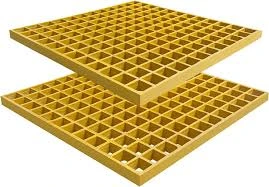loading...
- No. 9, Xingyuan South Street, Dongwaihuan Road, Zaoqiang County, Hengshui, Hebei, China
- admin@zjcomposites.com
- +86 15097380338
- Welcome to visit our website!
Advancements in FRP Composite Materials for Innovative Steel Structure Applications
The Role of FRP in Steel Structures
In recent years, the construction industry has witnessed significant advancements in materials science, leading to the integration of Fiber Reinforced Polymers (FRP) into steel structures. FRP combines the high strength-to-weight ratio of fiber with the durability and versatility of polymers, making it a compelling choice for modern engineering applications. This article explores the advantages of incorporating FRP in steel structures, its applications, and some challenges faced in its usage.
Advantages of FRP in Steel Structures
One of the most notable benefits of using FRP materials in steel structures is their exceptional strength-to-weight ratio. FRP composites are lighter than traditional steel, which reduces the overall weight of construction components. This lightness translates to lower transportation costs and eases the installation process. In regions prone to seismic activity, the reduced weight can enhance the structural performance, decreasing the risk of collapse during an earthquake.
Another significant advantage of FRP is its corrosion resistance. Traditional steel structures often face challenges related to corrosion, especially in environments exposed to moisture, such as coastal areas or industrial sites. The incorporation of FRP can significantly improve the lifespan of structures since they are resistant to rust and other forms of chemical degradation. This durability can reduce maintenance costs and prolong the intervals between necessary inspections, leading to substantial savings over time.
Additionally, FRP materials offer design flexibility. Their ability to be molded into various shapes enables architects and engineers to explore innovative designs that may have been challenging or impossible to achieve with traditional materials. The aesthetic appeal of FRP, combined with the structural integrity of steel, allows for a harmonious blend of form and function.
Applications of FRP in Steel Structures
The application of FRP in steel structures is diverse, spanning various industries. In bridge construction, for instance, FRP composites can be used for strengthening existing steel beams, enhancing load capacity while minimizing additional weight. They can also be incorporated directly into new bridge designs, providing a lightweight yet resilient alternative to traditional materials.
frp steel structure

In the realm of high-rise buildings, FRP can play a critical role in reinforcing steel columns and beams, particularly in high-stress areas. Its strength and lightweight nature contribute to reduced seismic forces, making multistory buildings safer during tremors. Moreover, FRP can be employed in facade systems, where its aesthetic qualities can be fully realized.
Another promising application is in the field of offshore structures and marine environments. Here, the combination of steel and FRP can withstand harsh weather conditions and the corrosive effects of saltwater, increasing the longevity of platforms and related infrastructure.
Challenges and Considerations
Despite the numerous advantages of FRP, several challenges must be addressed for its wider acceptance in steel structures. One of the primary concerns is the cost of FRP materials, which can be significantly higher than traditional steel. While the long-term savings on maintenance can offset initial costs, the upfront financial barrier may deter some projects.
Additionally, the manufacturing and installation techniques for FRP in conjunction with steel require specialized knowledge and practices. This necessitates training for laborers and engineers, which can present logistical challenges and additional costs during implementation.
Another issue is the lack of standardized design codes specifically for FRP within steel structures. As the market for FRP evolves, developing guidelines that ensure safety, performance, and quality becomes imperative. Regulatory bodies must adapt existing codes to account for the unique properties of FRP to enhance its acceptance in mainstream construction practices.
Conclusion
As the construction industry continues to evolve, the integration of Fiber Reinforced Polymers into steel structures promises to lead to innovative solutions that combine strength, durability, and aesthetic appeal. While challenges such as cost, installation, and standardization remain, the advantages of using FRP materials suggest a bright future in engineering applications. With ongoing research and development, it is likely that FRP will become an integral part of steel structures, paving the way for the next generation of construction technologies.
-
Transform Your Spaces with FRP Grating SolutionsNewsNov.04,2024
-
The Versatility and Strength of FRP RodsNewsNov.04,2024
-
The Excellence of Fiberglass Water TanksNewsNov.04,2024
-
The Benefits of FRP Grating for Your ProjectsNewsNov.04,2024
-
Elevate Your Efficiency with FRP Pressure VesselsNewsNov.04,2024
-
Welcome to the World of FRP Pressure VesselsNewsOct.12,2024
-
Unveiling the Future of Filtration: Why FRP Filter Vessels are a Game ChangerNewsOct.12,2024
